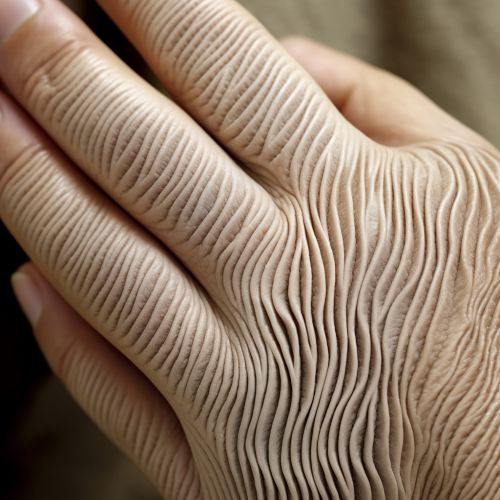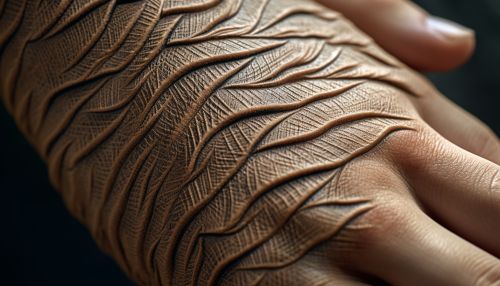Palm print
Introduction
A palm print refers to the unique patterns on the surface of an individual's palm. These patterns, which are formed by ridges and valleys in the skin, are used in various fields such as forensics, biometrics, and palmistry. The study and analysis of palm prints is known as dermatoglyphics.
Formation and Characteristics
Palm prints are formed during the fetal development stage, specifically between the 10th and 16th week of gestation. The patterns are influenced by genetic and environmental factors, resulting in unique prints for each individual. They remain unchanged throughout a person's life, except for size due to growth, making them reliable for identification purposes.
The characteristics of palm prints include ridge count, ridge flow, and pattern types. The ridge count is the number of ridges between two points, while the ridge flow refers to the direction of the ridges. Pattern types include loops, whorls, and arches, similar to fingerprints.


Applications
Forensics
In forensics, palm prints are used for identification purposes. They are often left at crime scenes and can be used to link a suspect to a crime. The process of comparing and matching palm prints is known as palm print recognition.
Biometrics
In biometrics, palm prints are used for authentication and identification purposes. They offer a higher level of security than fingerprints due to their larger area and more complex patterns. Palm print scanners are used in various applications, including access control systems, time and attendance systems, and identity verification systems.
Palmistry
In palmistry, also known as chiromancy, palm prints are analyzed to predict a person's future and understand their personality traits. The lines, shapes, and patterns on the palm are believed to provide insights into a person's life and destiny.
Collection and Analysis
Palm prints can be collected using various methods, including inked impressions, live scan devices, and latent print recovery techniques. The collected prints are then analyzed using manual or automated systems. Manual analysis involves a trained examiner comparing the prints, while automated systems use algorithms to match the prints.
Challenges
Despite their usefulness, palm prints also present several challenges. These include the difficulty in collecting high-quality prints, the need for specialized equipment and trained personnel, and the potential for errors in analysis. Moreover, ethical and privacy concerns have been raised regarding the collection and use of biometric data, including palm prints.
